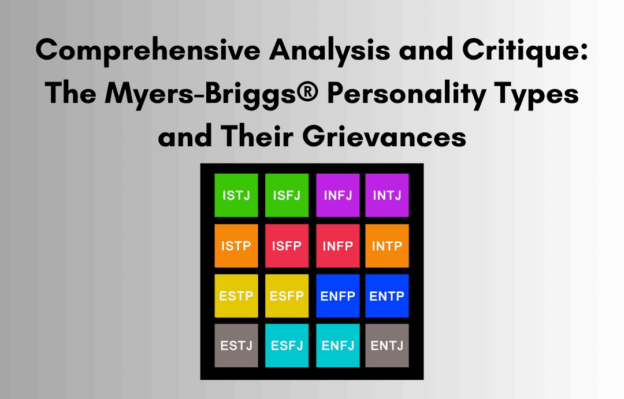In her article, “Here’s Why Each Myers-Briggs® Personality Type is Mad at You”, the author, Susan Storm takes us on a lighthearted tour through the 16 Myers-Briggs personality types, exploring the reasons each might be irked with you. This piece is a creative exploration into personality psychology, but it also opens a window into the broader discussion of how personality types interact in various social contexts, including how they might perceive or misinterpret the behaviours of individuals with neurodiverse conditions like Asperger’s Syndrome.
Contents
Origins
The article, published on Monday the 13th of November, 2023, appears to build on an earlier article written by Heidi Priebe and published online at the Observer called “Why Each Myers-Briggs Type Is Mad at You” on Tuesday the of May, 2018. The precursor article is even shorter, with a single bullet point per personality type.
Summarizing the Article
Storm breaks down, with humour and insight, how the characteristics of each Myers-Briggs type might lead to certain grievances in social interactions. For instance, the ISTJ’s value of reliability might lead them to be upset by last-minute plan changes, while the ESFP’s love of fun might be dampened by someone who dismisses their activities as shallow. She blends stereotypical traits of each personality type with common social faux pas to create a narrative that is both amusing and thought-provoking.
Critique
While the article provides an engaging and humorous look at personality types, it’s important to critique the limitations of such a stereotypical approach. Myers-Briggs types are not rigid templates; individuals within a type can exhibit a wide range of behaviours and reactions. Moreover, the article doesn’t address the complexity of neurodiverse individuals’ interactions with these personality types.
Neurodiversity and Myers-Briggs
Individuals with Asperger’s Syndrome, for example, often have unique ways of processing social cues and emotional responses, which could lead to misunderstandings with various personality types. For instance, an INTJ might misinterpret an individual with Asperger’s blunt and straightforward communication as rudeness, while an ESFJ might perceive their difficulty in expressing empathy as coldness. This aspect highlights the necessity for a more nuanced understanding of both Myers-Briggs personality types and neurodiverse conditions in social interactions.
Recommendations
- For Readers: It’s vital to use the insights from such articles as a starting point for understanding personality dynamics rather than as definitive guides.
- For Neurodiverse Individuals: Awareness of how different personality types might perceive certain behaviours can be useful. However, it’s equally important for neurodiverse individuals to communicate their unique perspectives and needs in social settings.
- For Writers and Educators: Future explorations into personality types should consider incorporating elements of neurodiversity to provide a more inclusive and comprehensive understanding of social interactions.
Building on the Article: Further exploration could involve creating scenarios where Myers-Briggs personality types interact with neurodiverse individuals. This could provide practical insights into fostering better understanding and communication between diverse personality types and neurodiverse individuals.
Conclusion
Susan Storm’s article offers an entertaining yet surface-level look into the Myers-Briggs personality types. However, incorporating an understanding of neurodiversity into the discussion of personality types could enhance empathy and effective communication across a wider range of social interactions. The real world is a tapestry of diverse personalities, and greater understanding leads to richer and more harmonious social fabrics.
